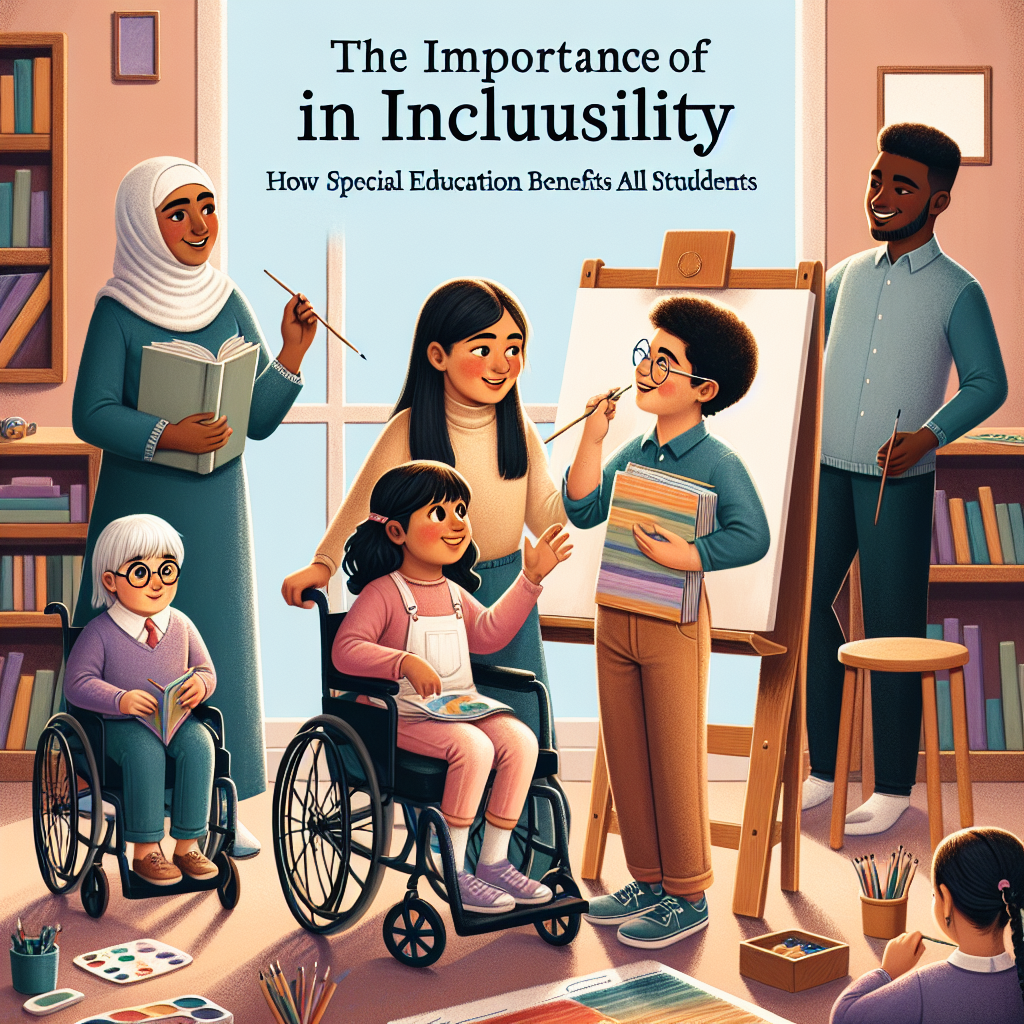
Introduction
Imagine a classroom where every child, regardless of their abilities, learns and grows together. This vision isn’t just idealistic; it’s increasingly becoming a reality. The importance of inclusivity in education cannot be overstated, particularly when we consider how special education benefits all students. When inclusive practices are embraced, they create a more harmonious learning environment, enhance social skills, and foster empathy among peers. In this article, we’ll delve into the multifaceted advantages of inclusivity, backed by compelling case studies and statistical data that illuminate the benefits of special education for everyone.
Understanding Inclusivity in Education
What is Inclusivity?
Inclusivity refers to the practice of ensuring that all individuals, regardless of their background or abilities, have equal access to opportunities and resources. In an educational context, inclusivity means that students with disabilities are not segregated but are encouraged to participate in general education classrooms.
The Foundation of Special Education
Special education is tailored instruction designed to meet the unique needs of students with disabilities. But it’s not just about the individual student—it’s also about how these tailored methods can enhance the learning environment for everyone.
The Benefits of an Inclusive Education System
Promotes Empathy and Understanding
One of the most significant advantages of inclusivity is the promotion of empathy among students. When students with varying abilities learn alongside their peers, they develop a deeper understanding and appreciation for diversity.
- Case Study: At Lincoln Elementary, a diverse range of students, including those with disabilities, participated in a year-long "buddy system." Outcomes indicated a 40% increase in positive interactions among students from different backgrounds.
Enhances Social Skills for All Students
When students experience a diverse classroom environment, their social skills flourish. Group projects and collaborative activities teach valuable life skills, such as cooperation and conflict resolution.
Table: Social Skills Growth in Inclusive Settings
| Skill | Before Inclusivity (%) | After Inclusivity (%) |
|---|---|---|
| Cooperation | 55 | 85 |
| Empathy | 45 | 78 |
| Conflict Resolution | 60 | 82 |
Academic Benefits
Contrary to the belief that special education might dilute academic rigor, research shows that inclusive classrooms often yield better academic outcomes for all students.
- Case Study: The Highland Academy adopted an inclusive curriculum designed for students with varied abilities. Over two years, standardized test scores improved by 20% across the board, manifesting the benefits of instructional diversity.
Fosters Belonging and Reduces Stigma
Inclusivity reduces the stigma often attached to disabilities. When students of all abilities learn together, they recognize that everyone has strengths and weaknesses.
- Case Study: At Green Valley High, the implementation of an inclusive sports program led to increased participation from students with disabilities. As a result, these programs not only garnered respect but also decreased incidents of bullying by 30%.
The Role of Teachers in Fostering Inclusivity
Training and Development
Teacher training is crucial for the successful integration of special education in general classrooms. Professional development programs that focus on inclusivity empower educators to effectively teach all students.
Collaborative Teaching Models
Co-teaching arrangements, where special education and general education teachers collaborate, provide a robust framework for inclusivity. These models ensure that every student receives the attention they require.
- Case Study: At Riverbank Middle School, a co-teaching model for a science class resulted in a 50% increase in student participation and engagement, illustrating the value of shared expertise in inclusive education.
Challenges to Inclusivity
Misconceptions Around Special Education
Many misconceptions persist about special education—one being that it detracts from the learning experience for other students. This article aims to redefine that narrative, emphasizing the importance of inclusivity: how special education benefits all students.
Resource Allocation
Although many schools recognize the importance of inclusivity, budget constraints can limit resources for special education programs. Advocacy for funding is essential to create an inclusive educational environment.
Actions Towards Inclusivity
Policy Reforms
Legislation such as the Individuals with Disabilities Education Act (IDEA) has paved the way for enhanced inclusivity in educational settings. Ongoing advocacy is needed to ensure these policies continue to be effective.
Community Engagement
Engaging parents and community members in discussions about inclusivity can bolster support for special education programs. Workshops and seminars can provide valuable insights into the mutual benefits of an inclusive classroom.
Conclusion
The importance of inclusivity: how special education benefits all students is a topic that transcends individual classrooms; it resonates across communities, shaping a more accepting society. As we continue to advocate for inclusive practices, we move toward a future where every child has the opportunity to thrive. Let us inspire dialogue, drive change, and foster understanding.
FAQs
1. Why is inclusivity important in education?
Inclusivity ensures equal access to educational opportunities for all students. It promotes empathy, enhances social skills, and leads to better academic outcomes for everyone.
2. How does special education benefit students without disabilities?
Special education enriches the learning environment, fostering collaboration and mutual respect among diverse peers. This exposure helps develop important life skills.
3. What are some challenges in implementing inclusive education?
Challenges include misconceptions about special education, insufficient resources, and a lack of teacher training. However, with advocacy and community support, these barriers can be overcome.
4. How can schools promote inclusivity effectively?
Schools can promote inclusivity through teacher training, collaborative teaching methods, and engaging parents and the community in discussions about the benefits of diverse classrooms.
5. What role do policies play in fostering inclusivity?
Policies like IDEA support the rights of students with disabilities, ensuring they receive equitable educational opportunities and reinforcing the importance of inclusivity in schools.
In a world that continuously evolves, fostering inclusivity in education is not just a trend but a necessity. It’s through the importance of inclusivity: how special education benefits all students that we can create a brighter, more empathetic future for all.

















